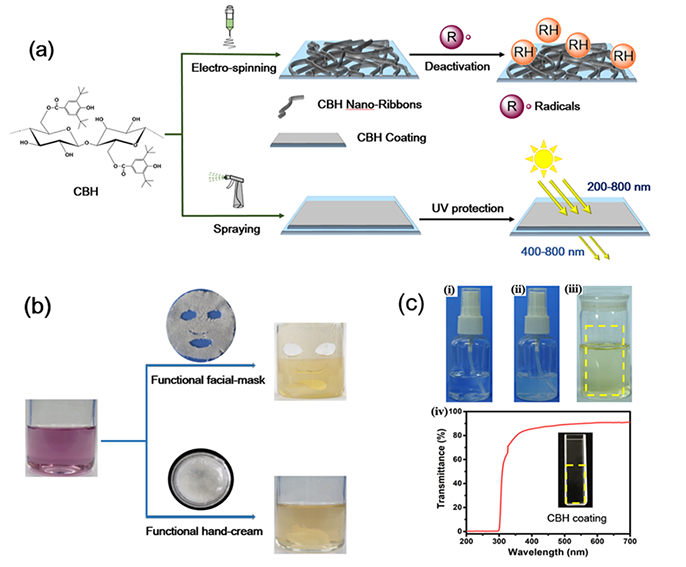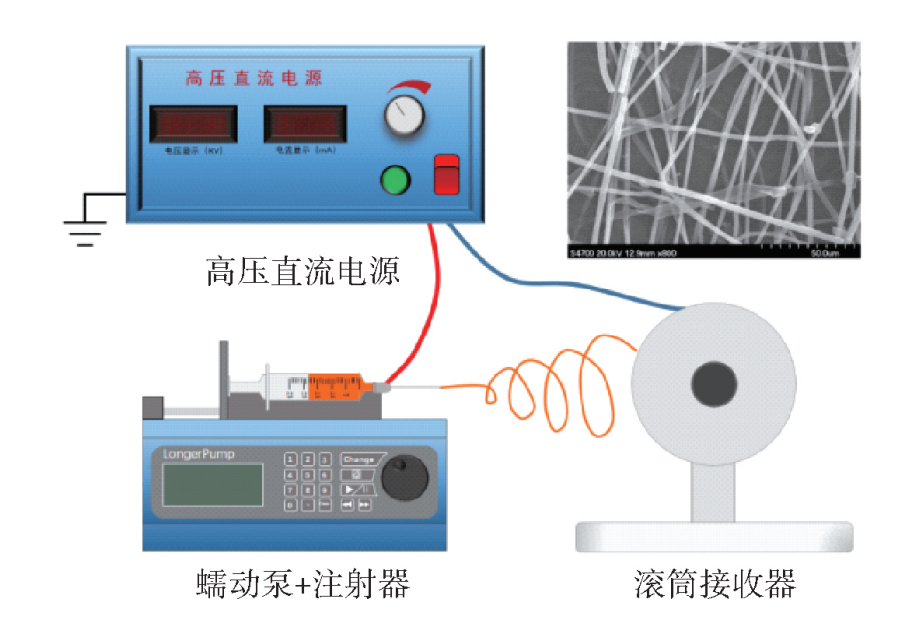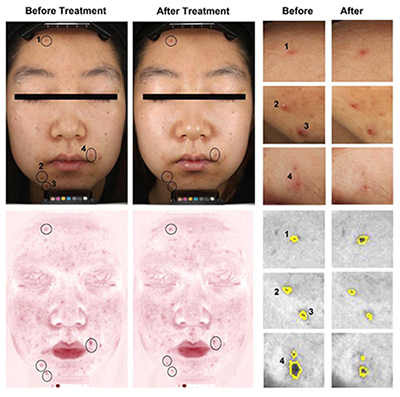Copyright © 2022 Foshan MBRT Nanofiberlabs Technology Co., Ltd All rights reserved.Site Map
1. Research on loading “multifunctional Cellulose Ester Containing Hindered Phenol Groups with Free-Radical-Scavenging and UV-Resistant Activities” on facial mask through electrospinning technology
Excessive radicals and UV irradiation can trigger oxidative and physiological stresses, which cause tissue aging, human disease, food spoilage, and material degradation. In this study, a multifunctional cellulose ester containing hindered phenol groups, cellulose 3,5-di-tert-butyl-4-hydrox-ybenzoate (CBH), with free-radical-scavenging and UV-resistant activities was synthesized and used as a functional material. The obtained CBHs can effectively scavenge reactive nitrogen free radicals and hydroxyl free radicals in both solid and solution states. Moreover, CBHs have no cytotoxicity, and, on the contrary, they promote the proliferation of human epidermal keratinocytes. Benefiting from excellent solubility, processability, and formability, CBHs have been readily processed into flexible films, transparent coatings, and nanoribbons membranes. The highly transparentand flexible CBH film completely absorbs the light of 200−300 nm range and partially absorbs the light of 300−400 nm range, indicating a UV-shielding capability. After the CBHs were loaded on an ordinary facial mask by electrospinning or added into a hand cream, the resultant facial mask and hand cream exhibited outstanding free-radical-scavenging properties. In addition, CBHs can also be used to fabricate functional sprays with antioxidative and UV-shielding activities. Accordingly, the obtained CBHs have a huge potential in cosmetics, personal care products, biopharmaceuticals, papermaking, and art protection because of their excellent antioxidation, nontoxicity, UV resistance, formability, and odorless properties.

Figure one
(a) Schematic of functional facial mask, hand cream, and spray with antioxidative and UV-shielding activities. (b) The functional facialmask and hand cream scavenge DPPH free radicals. The functional facial mask is the common facial mask coated with CBH1.52 nanoribbons. The functional hand cream is the vaseline mixed with 1 wt % SiO2@CBH1.52. (c) (i) CBH1.52/ethanol spray; (ii) CBH0.70/water spray; (iii) CBH0.70 coating on glass slide fabricated by CBH0.70/water spray and its antioxidative behavior for scavenging DPPH free radicals; (iv) CBH1.52 coating fabricated by CBH1.52/ethanol spray and its UV−vis spectrum. The inset is the digital picture of CBH1.52 coating
2. Preparation of solubilized collagen peptide/silk fibroin composite fiber mask by electrospinning method
Using electrostatic spinning technology to prepare a dissolving type mask, the prepared composite fiber membrane cloth is no longer just a carrier, but can dissolve by itself and be absorbed by the skin, acting as an essence, and successfully realizing the mask. The membrane cloth is integrated with the essence; it solves the problem of non-fitting of the mask membrane cloth and damage to the skin caused by chemical additives. The two essence components of collagen peptide (CP) and silk fibroin (SF) are added to 8% polyvinylpyrrolidone (PVP) in formic acid solution as a spinning solution, and a rotating drum is used as a receiving device for electrospinning.

Figure 2 The experimental device
The effects of blending ratio, spinning solution concentration and hyaluronic acid addition on electrospinning fiber were explored. The fiber morphology and the mechanical strength of the fiber membrane were tested and characterized by a scanning electron microscope and an electronic universal testing machine, and then the moisturizing and hydrating properties of the mask were further tested, and the actual efficacy of the fiber membrane was analyzed. The results show that the composite fiber has a relatively uniform morphology, the membrane cloth itself can act as an essence, has good solubility, and can play a better moisturizing and hydrating effect.
3. Fabrication and Characterization of Multiple Herbal Extracts-loaded Nanofibrous Patches for Topical Treatment of Acne Vulgaris
Herbal extracts have recently received considerable interest in acne therapy owing to their enhanced skin compatibility compared with antibiotics and synthetic agents. In this study, electrospun poly (vinyl alcohol)/chitosan (PVA/CS) fibrous patch incorporating a combination of herbal extracts with complementary mechanisms of action was developed as an alternative acne therapy for patients with resistance to the conventional treatments. The herbal extracts-loaded electrospun fibers displayed uniform and smooth-surfaced nanofibers (dia. 100-300 nm), high drug loading efficiency (89.5-97.7 %) and good water absorbing properties. Results of the in vitro release and antibacterial studies suggest the patches are capable of sustained release of polyphenol-rich extracts, which may, together with the chitosan present in the fiber, endow the patch with potent bacterial inhibition of Propionibacterium acnes. The herbal extracts-loaded patches exhibited pronounced clinical therapeutic efficacy in treating mild-to-moderate facial acne by rapidly reducing inflamed lesions and restoring epidermal barrier. Also, the herbal patches demonstrated improved biocompatibility or tolerability in comparison with the synthetic drug benzoyl peroxide. Overall, the present study has provided a facile approach to develop biocompatible polymers based electrospun fibrous patch for the efficient delivery of herbal extracts for topical skin therapy, opening new perspectives for a new generation of cosmetotextiles.

Figure 3
Patient 1, a 22-year-old female with mild acne: standard clinical images (A) and the VISIA-CR™ Red images (B) before and after 14 hrs of treatment with placebo, a blank tape (circle 1) or a tape loaded with PVA/CS (circle 2) or PVA/CS/ME3 (circle 3) or PVA/CS/ME9 (circle 4). Detailed subimages of the acne lesions and the imageJ processed grey scale images with auto-detected acne lesions were shown on the right side (C).
Link: https://link.springer.com/article/10.1007%2Fs12221-021-0156-1